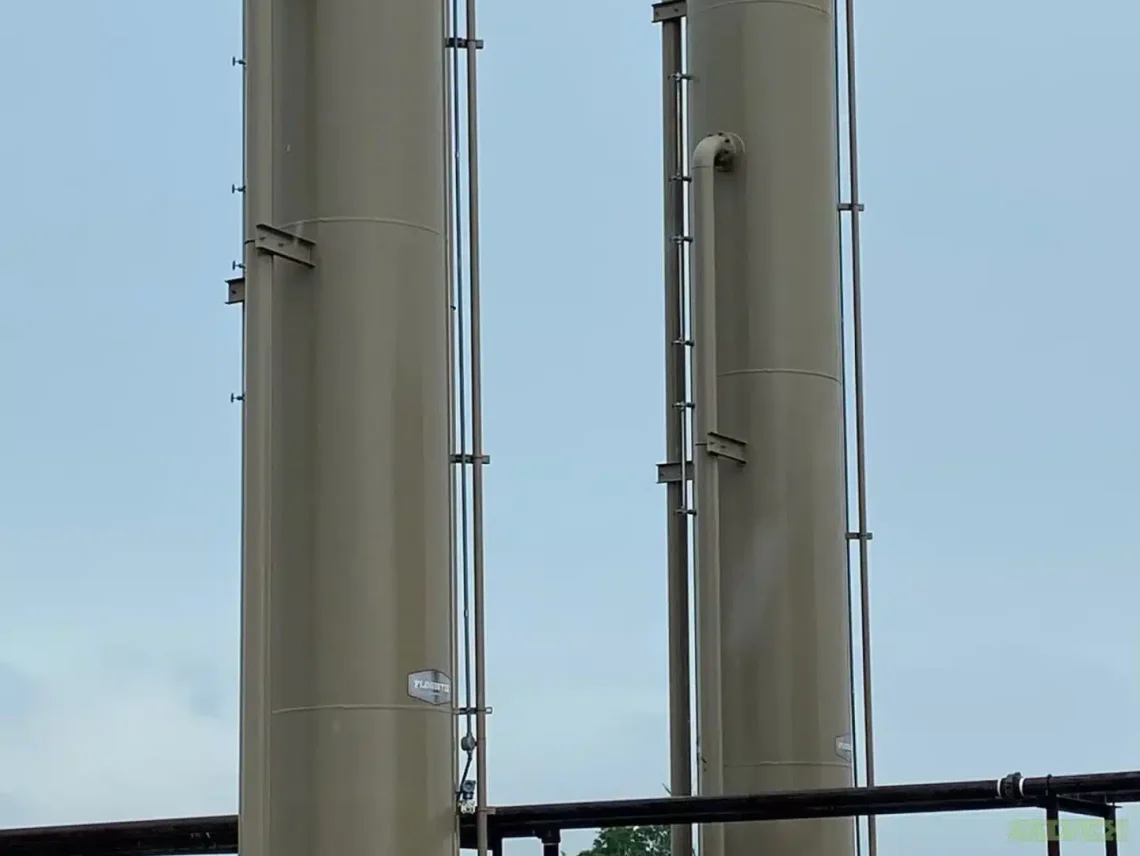Desiccant Dryers and Their Importance

Table of Contents
ToggleIntroduction to Desiccant Dryers
What Is a Desiccant Dryer?
Desiccant dryers are critical components in moisture control systems, essential for operations that require a consistent supply of dry, compressed air. Utilized across diverse industries including oil and gas, power generation, and especially in applications like vapor recovery tower vessels, these systems ensure optimal performance by removing humidity that can compromise the integrity of sensitive equipment and processes.
How Do Desiccant Dryers Work?
Desiccant dryers operate by passing compressed air through a chamber filled with desiccant material which absorbs moisture. This process is vital for maintaining the efficiency of machinery and preventing corrosion and other damage. In vapor recovery processes, where extracting volatile compounds safely is key, desiccant dryers play an indispensable role by ensuring that the recovered vapors remain free of moisture, thus enhancing the safety and efficiency of the operation.
Benefits of Using Desiccant Dryers
Incorporating a desiccant dryer into your operation can dramatically improve system reliability, prolong equipment lifespan, and increase operational safety. For industries like biogas where precise moisture control is crucial, these dryers are not just an add-on but a fundamental part of the system that protects against contaminants and ensures compliance with stringent quality standards.
Factors Influencing Desiccant Dryer Size
Assessing Your Air Quality Requirements
The quality of air required for your application, particularly in complex setups like vapor recovery tower vessels, dictates the size of the desiccant dryer needed. Ensuring that the air meets the specific purity standards of your industry is crucial, and the capacity of your desiccant dryer must align with these needs.
Understanding Flow Rate and Its Impact
Flow rate is a critical factor in selecting the right size desiccant dryer. It determines how quickly air moves through your system and impacts how effectively moisture can be removed. This is especially important in systems that deal with high-volume recovery processes, where maintaining a steady flow rate is essential for operational continuity and safety.
Importance of Dew Point Specifications
The dew point specification required by your application guides the selection of an appropriately sized desiccant dryer. Lower dew points require more robust drying capacity, a critical consideration in environments where minimal moisture can lead to significant operational disruptions or safety hazards.
Need a reliable partner?
FAQ: Selecting the Right Desiccant Dryer for Pressure Vessel Applications
What are the key considerations when choosing a desiccant dryer for vapor recovery systems?
When selecting a desiccant dryer for vapor recovery systems, key considerations include the chemical composition of the vapors to be recovered, the volume of air to be treated, and environmental conditions such as temperature and humidity. It’s crucial to choose a dryer that can handle the specific characteristics of the vapors without compromising the recovery process or safety standards.
How does ambient temperature affect the performance of desiccant dryers in pressure vessels?
Ambient temperature can significantly impact the performance of desiccant dryers. Higher temperatures can reduce the moisture-holding capacity of the desiccant material, necessitating a larger or more efficient dryer system. In cooler temperatures, the dryer might perform more efficiently, but the dew point levels need to be monitored closely to prevent condensation within the pressure vessel.
Can desiccant dryers be used for all types of gases in pressure vessels?
Desiccant dryers are versatile and can be used for drying a wide range of gases, including air, natural gas, and hydrogen. However, the suitability depends on the type of desiccant used and the gas’s specific properties. Some desiccants may react with certain gases, so it’s important to select a dryer system that is compatible with the gas type and the application’s specific requirements.
What maintenance practices should be followed to ensure the longevity of desiccant dryers in industrial applications?
Regular maintenance of desiccant dryers includes monitoring the performance and condition of the desiccant material, checking and cleaning filters, and ensuring that all seals and valves are functioning properly. It is also important to perform periodic regeneration of the desiccant to restore its drying capacity.
How do I know when it's time to replace the desiccant in my dryer?
The lifespan of desiccant material depends on several factors, including the frequency of dryer use, the quality of the compressed air, and the operating environment. Indicators that it may be time to replace the desiccant include a noticeable decrease in performance, increased humidity levels in the output air, or longer regeneration cycles. Regular testing and monitoring of the dryer’s output can help determine when the desiccant needs to be replaced.
Solutions
In the realm of industrial solutions, Red River emerges as a pioneer, offering a diverse range of custom-engineered products and facilities. Among our specialties is the design and production of Custom/OEM Pressure Vessels, meticulously crafted to meet individual client requirements, ensuring performance under various pressure conditions. Our expertise extends to the domain of prefabrication, where Red River leads with distinction.
The company excels in creating prefabricated facilities, modules, and packages, reinforcing its stance as a forerunner in innovation and quality. This proficiency is further mirrored in their Modular Skids offering, where they provide an array of Modular Fabricated Skid Packages and Packaged equipment. Each piece is tailored to client specifications, underlining their commitment to delivering precision and excellence in every project they undertake.
Need action? Ready to Get Started?
We are here to make it happen. Request a quote!

